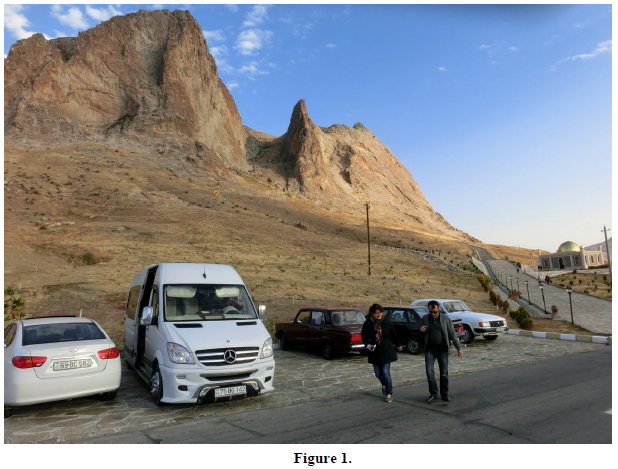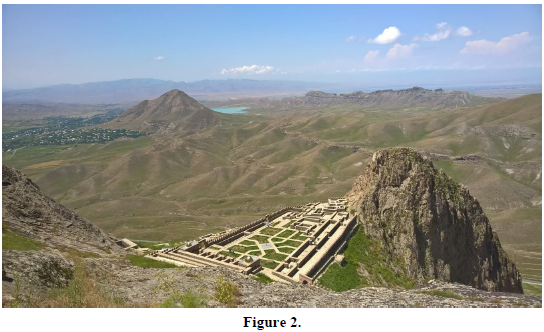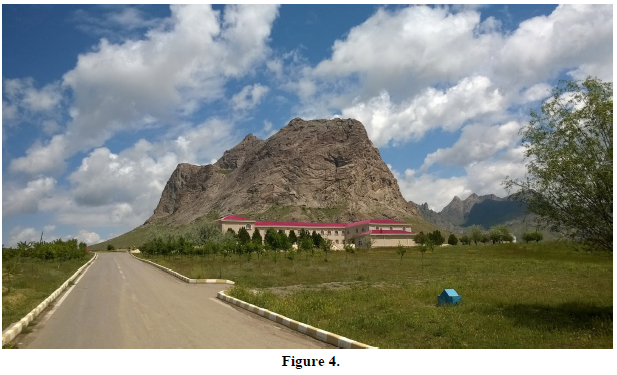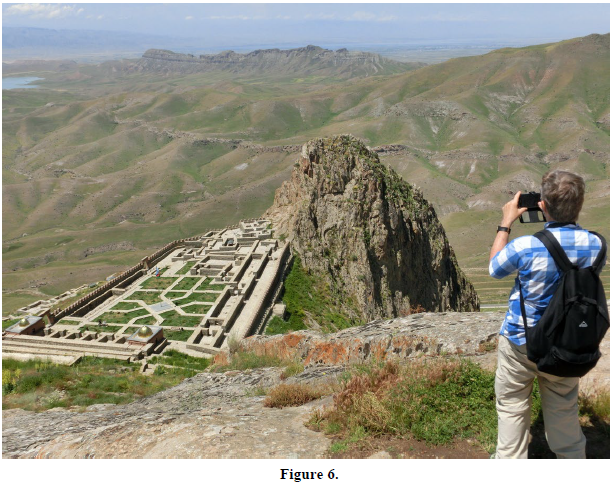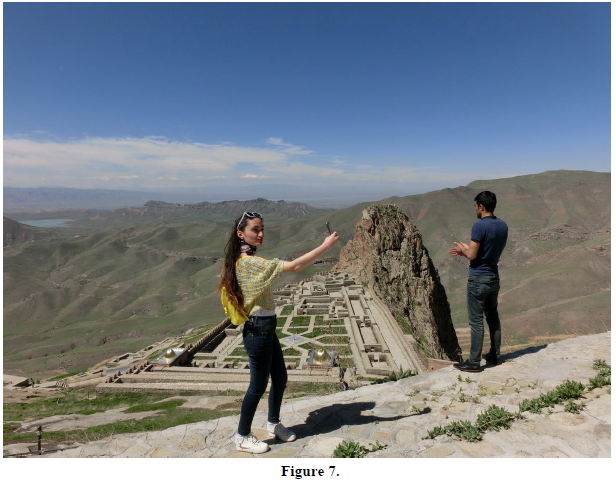INTRODUCTION
Perfect and deep understanding of travel motives of the modern tourists and tourism recreation services establishment on these bases, diversification of tourism product and also developing tourism to the mass level are more significant at present (Mahika, 2011). The history of tourism development and consultative work with tourists once again display the reality obviously that we have to give up all kind of old-fashion services, repeated trends by all means must be renewed with desirable forms, development perspectives must be economically affordable, tourisms grounded on humanitarian-ethics, ecological and pedagogic-educative functions must be broaden, exact and social scientific investigations must be carried out. Surely, one can’t say that modern business representatives are lucky on implementing above mentioned aspects perfectly to satisfy the demand of 1.3 billion of tourists (UNWTO Tourism Highlights, 2018) on the Earth planet due to their cultural level. So that natural and historical-cultural resources used in tourism are more multitranche and unused compared with the other branches of economy. We have to know that the last principle (Osaka Millennium Declaration) is much more valuable pursuant to UNWTO recommendations. In this regard the tourism recreation charming of the Alinja Castle and it’s around is always more interesting for tourists. The Alinja Castle in the Julfa region of Nakhchivan situated at 30 km. distance in the north-east direction of Nakhchivan is very suitable for the tourists one day excursion.
At present Nakhchivan-Alinja tourism route draws the attention of a lot of foreign tourists and mainly thousands of young local tourists as well (Tase, 2015). This route operates all year round and the motives of travel are formed before visiting here. Doubtless, tourists from England, Germany, Baltic states won’t be able to have eyewitness on sharp rocky places as they are used to see everywhere in their homeland but their impressions on rare example of Machu Picchu, the ancient Ink culture in Peru can play a great role in polishing their thoughts. Because in the atmosphere of modern information richness, the tourists having more virtual information about the Alinja Castle find everything true after visiting here.
SHORT TRIP BACK TO HISTORY
Factually the Machu Picchu of Azerbaijan, namely the Alinja Castle is very ancient (Tase, 2015). The history of the castle city Machu Picchu of Peru dates back to the XV century (Magli, 2000), but completely and scientifical age of the Alinja Castle dates back to the V-VI of our century (Alinjagala, 2016). Still one of the ancient sources mentioned on the castle is “Kitabi-Dede-Qorqud” epos. Starting from the XII century the Alinja Castle is mentioned in different historical sources frequently. The gained and studied materials prove that in the rein of the Azerbaijan Atabaylar-Eldaniz the Alinja Castle was a place of military-strategic, economic and political importance. Historians such as: Asogic (928-1019), Stepanos Orbeliani (1258-1304), Nasavi (XIII century), Sharfaddin Ali Yazdi (XV century), Spain ambassador Klavikho (XV century), Turkish traveler Ovliya Chalabi (XVII century) gave through information about the Alinja Castle. Spanish ambassador Ryu Qonzales do Klavikho who lived in the XV century wrote on his note-book about the Alinja Castle that: “The Alinja Castle is situated on the top of high and sharp rocky place and surrounded with walls and towers. There were on the slopes of the mountain wine yards, gardens, fields, pastures, springs and pools. But by times being the shelter for different rulers of Azerbaijan and Near East underwent destroy and ruins in the period of Temers and Mongols but later on it was restored”. The Alinja Castle fought against the army of Emir Temer fourteen years (1387-1401) and that history is the glorious page of the Azerbaijan history.
Based on the historical sources the existence of the Alinja Castle lasted till the XVI-XVII centuries in the land of Azerbaijan and fulfilled two functions of the Azerbaijan rulers, such as; 1) Defense fortification, 2) Defense of treasure. All this connected with the location of all the Alinja Castle on the sharp rocky place, impossible paths to the castle, the advantages of the defenders because of being on the top and some other relief opportunities. But today the same Alinja Castle, the settlements around it and as well as the historical-cultural monuments draw the attention of tourists and even the hikers respectively. When regained the independence in 1991 the Republic of Azerbaijan and Nakhchivan Autonomous Republic within it began to draw the attention of foreign tourists and it impacted the Alinja Castle to be in the spotlight of the charming tourism destination.
TOURISM IN NAKHCHIVAN: BRIEF OVERVIEW
As a tourism destination Nakhchivan is known very well among the modern experienced tourists. At every tourism season one can read the views and impressions of hundreds or thousands of tourists over internet visited Nakhchivan. Of course, it is more attractive for venture lover tourists to find themselves in the exclave with 5.5 thousand km2 territories within the Republic of Azerbaijan. Another significant element related to this is that, during cold war period Nakhchivan as a region of the former USSR bordered on Iran and Turkey for this and other reasons generally tourists were not permitted to visit here (Jabbarov & Zulfugarov, 2015). As known the accumulated interest began to display itself at the same time when the USSR collapsed, but the Armenia’s occupation attacks to Azerbaijan soured the critical situation in the Southern Caucasus and energy cut communication and transport blockade in Nakhchivan toughened tourists’ travel to our flourishing land. But starting from 2000 years the number of tourists began to increase in Nakhchivan thanks to economic condition stabilization, transport, communication deals solution and above all the establishment of modern tourism infrastructure.
Every year about 400 thousands tourists, majority of which are foreigners, visiting Nakhchivan satisfy with the nature, historical-cultural-ethnographic and anthropogeny originated tourism resources and in the same time their recreation, treatment and acquaintance requirements are realized respectively.
Although the Alinja Castle is a new tourism destination in Nakhchivan but there are a number of tourism resources to be pleased with, such as; Ashabi-Kahf sanctuary which is mentioned in holy Qurani-Karim, prophet Noah’s tomb, wholly Ordubad region where ethnographic and national-cultural traditions have been preserved perfectly, Salt-Rock mines that have been operating since 1970 and asthma bronchial diseases are treated with Speleotheraphy method (Jabbarov & Zulfugarov, 2015), Batabat summer pasture with charming landscape and sailing island, mineral water resources as Badamly, Sirab, Daridagh exported several foreign countries. All these names and so many unnamed places are tourism destinations too. But the impressions of the tourists, who find their true aptness in safety and lots of rejoices they got from, are unsubstitutional elements in travelling. In this meaning the analysis of the tours from different countries and people of different categories to the Alinja Castle once again demonstrate the vivid picture of their impressions about this adventure tourism, the interest to tourism embracing “high walking” increase rapidly. Surely, nowadays not everyone has the opportunity to be a member or Space tourism club, but major people can watch the wonders and endlessness of the world from either Machu Picchu or Alinja Castle and with this they can establish their recreation tourism timely. In order to understand the importance of such a recreation we have to similar it with the smartphones to have been used almost by everybody, or even in the future to create any device to be as useful and beneficial as recreation is. Let’s compare two things with each-other in order to be much clearer to us. Imagine, people travelling to the Mars or the Moon tell their impressions to the people on the Earth planet after coming back. Their told any single fragment about the Mars and the Moon doubtless will sound too strangely and even unbelievable. This episode looks like a man aged more than 70 from Europe and his impression about the Alinja Castle. When the man from Europe finds himself in the Alinja Castle which is about 1500 m above sea level and stands on the hill top over 500 m high and looks down from that distance, by all means it will see to him that the world is being rediscovered newly (Figure 1). We think that working out such an emotional and physiological recreation requirements methodology and its estimation will impact the tourism promotion and above all Rooftop tourism inclusively. We have to keep in our minds that popularization of tourism should be in the spotlight of humanity.
METHODOLOGY
Studying travelling motivation of tourists for the Rooftop tourism starts from climbing up the high rocky places as the Alinja Castle is and watching the views said to be unusual compared with the places of complicated relief and their behavior and attitude to the panorama (Figure 2). The natural instinct of people in climbing up high places or being on the highest place is considered to be close to God (Gothic style of construction has the meaning: “to upraise to the Almighty”) or the intention of any elderly or stout person to overcome the obstacles and climb up the high places are also the factors of visible motivation. In addition, when offering the tourists to visit to Nakhchivan and see the Alinja Castle, firstly we consider it our fixed duty to explain them the motivation and possibilities in climbing up the castle along with the history of this wonderful place. It is because of that major tourists from big cities who always prefer to go anywhere by transport when climbing up the Alinja Castle one can easily observe their strange behaviors. Although the difficulties of the way leading to the castle played a great role for local government to defend themselves and fight against the troops of Emir Temer, but then it created difficulties for the excursionists who intended to climb up here. In 2016 the castle was completely restored and the way leading to it made climbing easier to the Alinja Castle (Figure 3). In other word about 700 years ago Emir Temer who came to Bagdad from the Middle Asia after occupying unthinkable large lands with his powership but during 14 long and hard years he and his brave troops were defeated by local fighters (Alinjagala, 2016) and he couldn’t climb up the castle, but today the tourists visiting here can do it during 35-40 min and enjoy of the incredible views of the Alinja Castle. So that, this and other unmentioned factors impact the rise of Roof tourism numbers by years rapidly. Due to some thoughts of people looking down on people is considered egoism but looking down from the point of natural top motivates human and this feeling isn’t speakable but only live practice, that’s adrenalin. May be this and other form of braveries or may be the instinct focused to be alive, or derivation type of pools of different forms and capacity, roof harvesting in this complicated relief or strengthened defense walls built by the Alinja Castle defenders are next factors that tourists are eager to see them. Thus when learning the perspectives of the Roof tourism in different corners of the world it is advisable to pay more attention to sole relief and attractive elements opening from the top in the example of the Alinja Castle. So in different cities of the world said to be popular for their skyscrapers and rather high building’s Roof tourism lovers find their relaxation easily by watching the view of nature.
DISCUSSION
No secret that Roof tourism is one of the rather risky and in the same time too reputed types of tourism. When glancing at the map of this kind of tourism we can observe that the major members of Roof tourists finding themselves in the mountains of the Pamir (called as the roof of the world), Tibet (World Roof Tours) or high buildings in Stockholm and Saint Petersburg, are the people having traditional travelling practice. We think that while there is the potential of the tourists “armed” with pick celled photographic cameras and smartphones with broad opportunities the better known roof tourism can alter the rooted traditional LLL (Land, Lore, Landscape) or SSS (Sun, Sea and Sand) with EEE (Earth, Extreme, Enjoyment) formula and in a short distance touring tourists can see, learn more things, can get more adrenalin than ever and above all can get pleasure of their trips. In this sense, the impression of any tourists joined the Roof tourism can be more than compared with any simple tourism. Willy-nilly the process is undeniable and we have to believe in this reality.
And what about the beneficence of the Rooftop tourism in the example of the Alinja Castle to Nakhchivan or to the practice of the world tourism? First of all, we have to accept this simple reality that tourism is the sensitive field as some other branches that bases on more rational use of the resources. In this regard we have to confess that tourism travels have increased and when the number of tourists increases, the amount of anthropogenic impacts on environment increases respectively and no doubt that it makes contradiction to the principles of sustainability (Cameron & Gatewood, 2008). In other word, if we think of the flower tapped by tourists, or any bird frightened again by tourists in its nest, tens or even hundreds of kilometers distance stretched towards the vast lands to be observed from the highest point as the Alinja Castle is and finally photo hunting venture taken here may be very favorable practice of sustainability (Sunlu, 2003). The most available forms of such compact roof travels can influence to reduce the possible surplus expenses in favor of tour firm’s further activity.
It is fact that the practical possibility of the Roof tourism in the Alinja Castle is very high. As it was mentioned above this castle is at 30 km. distance from the international airport in the city of Nakhchivan. Transport usage to the castle is very easier, comfortable and multitranche as well. So that, there are 4-6 plane flights from Baku the capital of Azerbaijan, once a week plane flights from Moscow and Istanbul and together with this one can visit here via Igdir (the border province of Turkey with Nakhchivan)-Nakhchivan customs working 24 h by any automobile which only takes 3 h to arrive at the destination. One glad news to convey to the mind of tourists is that including road to Alinja Castle, all ways and roads in the territory of Nakhchivan Autonomous Republic have been completely reconstructed, modernized and safety is of high quality (Figure 4). No one can complain about traffic jam and no one can feel any minute program delay in transportation. Trade services along the ways are highly hygienic and meet to standards. The opportunity to stay in the 4-5 star hotels and make a reservation is very simple and easy. It is possible to visit the Alinja Castle by taxi from Nakhchivan which costs about 40 Manats (20 Euros). All tourism agencies and tourism operators acting in Nakhchivan have got young guides and polyglots too. Also the regional tourism and information center operating in Nakhchivan can any time offer their help to tourists. In the direction of Alinja Castle and totally in Nakhchivan local people are very kind and sensitive to the tourists. Visitors being in Nakhchivan and its suburbs surprise with unthinkable sanitary cleanness and even the Alinja Castle, respectively. One can easily use drinkable water from any spring and taps in the settlements without any fear, since the safety of drinkable water is guaranteed. Poisonable insects are seldom seen in the castle and around it. Climbing up the Alinja Castle due to age, gender and group members of the tourists change between 2-6 h. Even especially in hot and warm months of the year evening tours are possible to the Alinja Castle, since the constant evening illumination there. Though upstairs to the Alinja Castle enough number of litter containers have been placed but the tourists being there use of them very seldom, as they don’t take with themselves food or fruit to eat but only bottles of water or energetic biscuit packages. Again around the castle seems to us as mighty as it was thousand years before. All birdwatchers prefer to observe the fly of eagles and other rare birds over their heads from the top of the mountain. As the top surface of the castle is large enough (about 2 hectares) it is possible to place about 600 people at once there. In most cases selfie mad tourists enjoy taking various selfies on the highest rocky peak but Muslim tourists prefer to perform their praise on the castle more heartily. As due to Islamic belief to pray on the high point means to be closer to God. Especially in the afternoon pray time the sounded Azan from the village mosques at 3-6 km distance (Figure 5) makes very charming recreation in the mind of non-muslim tourists, it seems to them as miracles. The effect of mentioned factors ispermanent as besides the bird sounds and wind blow there is nothing to spoil theharmony of nature. There is very vast and huge panorama (Figure 6) starting fromthe territory of Iran till the Zangazur Mountains for those who enjoy taking photosor selfie (Figure 7). The shape and structure of the Alinja Castle cause to feel theleast highness fobby on people. The recommended age for the castle climbers isbetween 8-80. Among the local people there is no any complainer connected withthe climbers to the castle as the tourists don’t commit any problem or discomfortagainst their daily routine. Tourists climbing up the mountain can use of differenthelps of the existing sanitary station. In the same time the tourists arerecommended to make use of umbrellas and sun creams in the hot months. In anycase the experienced tourists visiting long distance place as Machu Picchu or theAlinja Castle clearly know what to have about themselves, what to take with themselves. At last after seeing the wonders of the Alinja castle and taking some notes for themselves they get additional opportunity to see the found objects after restoration in the built museum at the foot of the castle and learn rich information on the ancient history of the Azerbaijani people.
FINDINGS
Our arrived results after the carried out investigations in the direction of the Roof tourism in the Alinja Castle of Nakhchivan and as well as practical conclusions may be enumerated as follows from the tourism motive realization and organizing points of view:
•The organizing Roof tourism to historical places motivates not only old andmiddle aged travelers but also the youth and especially students indeed;
•Excursions in the field of Roof tourism strengthen the feelings of rationalityand ecological education in the youth and also it is possible to use this as ameans of pedagogical education respectively;
•The tourists climbing up the Alinja Castle and their objective interests incomparison with Machu Picchu once again approve the reality that theaverage and alike culture to have been created by two civilizations evenbeing unaware of each-other, surely plays a great role through the eyes ofthe tourists’ rediscovery.
•The Rooftop tourism experience implemented in the Alinja Castle is ofgreat importance for the developing countries and as well as the regions toselect the most suitable type from point of tourism-excursion servicediversification.
ACKNOWLEDGMENT
The authors climbed up the Alinja Castle several times to investigate the historic realities through their eyewitness and also they were in close contact with the tourists from different countries who had been to Machu Picchu of Peru, learned their all-round impressions and tried to make some contribution to Rooftop tourism lovers and above all researchers. The authors express their cordial and sincere gratitude for those who shared their practical views with us in time.
The authors are also grateful to “Cahan” Holding (www.cahan.az) and “Lezzet Food Industry” LLC (www.lezzet.az) company in Nakhchivan, who kindly supported tourism research activities of them.

